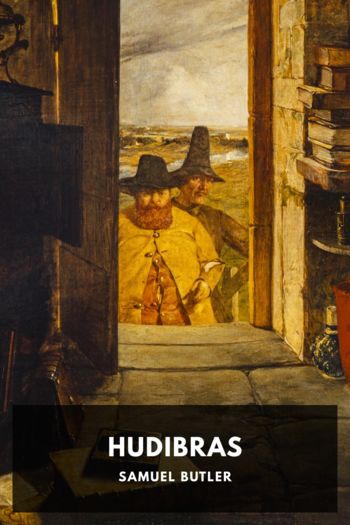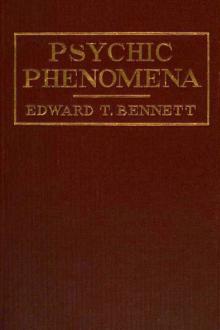The Diary by Samuel Pepys (children's ebooks online TXT) 📕

Description
Pepys’ Diary is an incredibly frank decade-long snapshot of the life of an up and coming naval administrator in mid-17th century London. In it he describes everything from battles against the Dutch and the intrigues of court, down to the plays he saw, his marital infidelities, and the quality of the meat provided for his supper. His observations have proved invaluable in establishing an accurate record of the daily life of the people of London of that period.
Pepys eventually stopped writing his diary due to progressively worse eyesight, a condition he feared. He did consider employing an amanuensis to transcribe future entries for him, but worried that the content he wanted written would be too personal. Luckily for Pepys, his eyesight difficulties never progressed to blindness and he was able to go on to become both a Member of Parliament and the President of the Royal Society.
After Pepys’ death he left his large library of books and manuscripts first to his nephew, which was then passed on to Magdalene College, Cambridge, where it survives to this day. The diary, originally written in a shorthand, was included in this trove and was eventually deciphered in the early 19th century, and published by Lord Baybrooke in 1825. This early release censored large amounts of the text, and it was only in the 1970s that an uncensored version was published. Presented here is the 1893 edition, which restores the majority of the originally censored content but omits “a few passages which cannot possibly be printed.” The rich collection of endnotes serve to further illustrate the lives of the people Pepys meets and the state of England’s internal politics and international relations at the time.
Read free book «The Diary by Samuel Pepys (children's ebooks online TXT) 📕» - read online or download for free at americanlibrarybooks.com
- Author: Samuel Pepys
Read book online «The Diary by Samuel Pepys (children's ebooks online TXT) 📕». Author - Samuel Pepys
Prince of Orange, afterwards William III. ↩
Index Rhetoricus of Thomas Farnaby was a book which went through several editions. The first was published at London by R. Allot in 1633. ↩
Thomas Case, born 1598, was a famous preacher and a zealous advocate for the Solemn League and Covenant, a member of the assembly of divines, and rector of St. Giles’s-in-the-Fields. He was one of the deputation to Charles II at Breda, and appointed a royal chaplain. He was ejected by the Act of Uniformity, but remained in London after his ejection. Died May 30th, 1682. ↩
This is somewhat different to the usual account of Morland’s connection with Sir Richard Willis. In the beginning of 1659 Cromwell, Thurloe, and Willis formed a plot to inveigle Charles II into England and into the hands of his enemies. The plot was discussed in Thurloe’s office, and Morland, who pretended to be asleep, heard it and discovered it. Willis sent for Morland, and received him in a cellar. He said that one of them must have discovered the plot. He laid his hand upon the Bible and swore that he had not been the discoverer, calling upon Morland to do the same. Morland, with presence of mind, said he was ready to do so if Willis would give him a reason why he should suspect him. By this ready answer he is said to have escaped the ordeal (see Birch’s Life of Thurloe). ↩
The admiral celebrated in Lord Dorset’s ballad, “To all you ladies now at land.”
“Should foggy Opdam chance to know
Our sad and dismal story;
The Dutch would scorn so weak a foe,
And quit their fort at Goree
For what resistance can they find
From men who’ve left their hearts behind?”
—B. ↩
Peter Pett succeeded his father, Phineas Pett, as Commissioner of the Navy at Chatham, in 1647; he was continued in his office after the Restoration, but in 1667, in consequence of the Dutch attack upon Chatham, he was superseded, sent to the Tower, and threatened with impeachment. The threat was not carried out, but he was never restored to office. Fuller observes that the mystery of shipwrights for some descents hath been preserved successively in families, “of which the Pettes of Chatham are of singular regard.” —Worthies of England. There is an interesting autobiographical memoir of Phineas Pett, in his own handwriting, in the British Museum (Harl. MS. 6279). Extracts from a copy of this MS. were printed in the Archæologia (vol. xii). ↩
Eldest son of Sir Gilbert Pickering, whom he succeeded in his titles and estates in 1668. His father had been an active Commonwealth man, and was one of the knights of the shire for the county of Northampton in 1656; he was also of Cromwell’s council, chamberlain of the court, and high steward of Westminster. Sir Gilbert Pickering’s petition being read, he was ordered to be excepted as to the penalties to be inflicted not reaching to life, by an act provided for that purpose. —Commons’ Journals; see June 19th, 1660. —B. ↩
Andrew Marvell alludes to the poor condition, for clothes and money, in which the King was at this time, in A Historical Poem:—
“At length, by wonderful impulse of fate,
The people call him back to help the State;
And what is more, they send him money, too,
And clothe him all from head to foot anew.”
↩
Mary, Princess of Orange. ↩
James’s patent was dated June 6th, 1660. ↩
Edward Montagu, afterwards Lord Hinchinbroke. ↩
On January 29th, 1658, Charles II entrusted the Great Seal to Sir Edward Hyde, with the title of Lord Chancellor, and in that character Sir Edward accompanied the King to England. ↩
Thomas Fuller, born June, 1608; D.D. 1660; one of the most delightful writers in the English language; Chaplain to the King, Lecturer at the Savoy, Prebendary of Salisbury and Rector of Cranford. He died at his lodgings in Covent Garden, August 16th, 1661, and was buried at Cranford. ↩
Henrietta Maria. ↩
The House in the Wood (Huis ten Bosch) at the Hague is still a show place, and the picture described by Pepys can still be seen in the Oranje Zaal (Orange Hall). The hall was built by a Princess of Solms, grandmother of our William III, and decorated with paintings in honour of her husband, Prince Frederick Henry of Orange. ↩
Mary, Princess Royal, eldest daughter of Charles I, and widow of William of Nassau, Prince of Orange. She was not supposed to be inconsolable, and scandal followed her at the court of Charles II, where she died of smallpox, December 24th, 1660. ↩
The Voorhout is the principal street of the Hague, and it is lined with handsome trees. ↩
Delft is about five miles from the Hague. ↩
The trekschuit (drag-boat) along the canal is still described as an agreeable conveyance from Leyden to Delft. ↩
Admiral Martin van Tromp’s monument here described is in the Oude Kerk {Old Church) at Delft. ↩
The costly but clumsy monument erected by the United Provinces to the memory of William I, Prince of Orange (who was assassinated at Delft, 10th July, 1584), is in the so-called New Church at Delft. ↩
The Stadhuis is a fine building situated in the marketplace. ↩
Afterwards Colonel Edward Harley, M.P. for Hereford, and Governor of Dunkirk; ancestor of the Earls of Oxford of that race, now extinct





Comments (0)